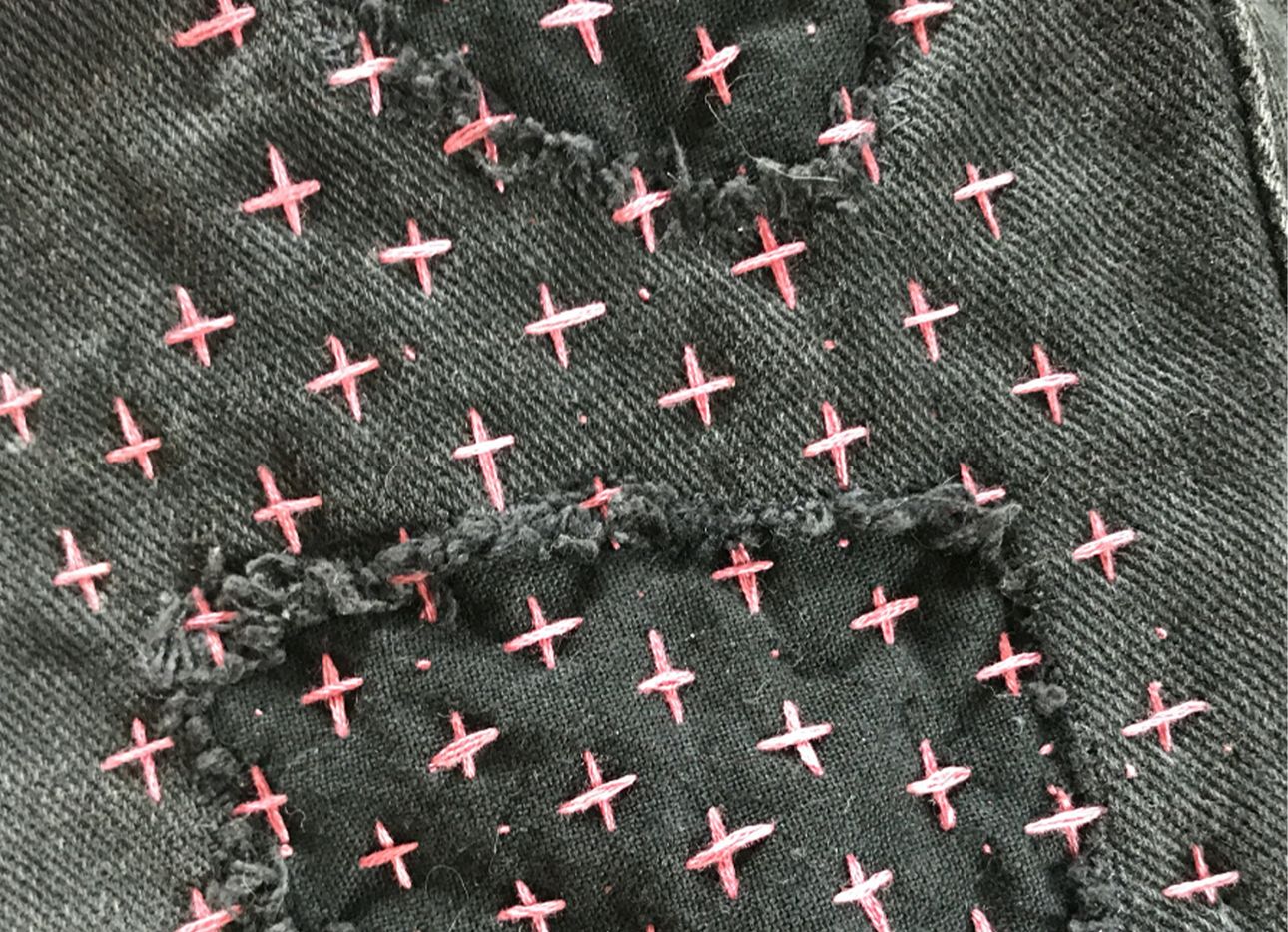
In Minnesota, a Denim-Repair Shop Celebrates Wear and Tear
“There should be as many clothing repair shops as there are gas stations,” says Satchel B. Moore, founder of the Saint Paul, Minnesota-based denim service and mending shop Science and Kindness. “After all, there are more pairs of pants in the world than there are cars.” Moore started the initiative, which he runs out of his apartment, following his work at the local menswear boutique BlackBlue, where he sourced high-quality Japanese selvedge denim from brands including A.P.C., Left Field, Baldwin, and Raleigh. Many of his clients developed a connection to the jeans and, wanting more wear out of them, would often return to ask him for alterations or repairs. In an effort to reduce waste and extend the lifespan of clothing, Moore—who grew up in the Waldorf school system, where knitting, crocheting, and sewing are integral to the curriculum—decided to take on the stitching himself.
Moore and his team restore ripped seams, tattered knees, and hole-riddled pockets with a range of techniques, such as hand-applying patches, darning stitches, and sashiko (“little stabs”), a decorative type of traditional Japanese embroidery that’s also used to mend fabric. Sometimes their work is undetectable, but usually, it intentionally stands out, celebrating the experiences that led to the garments’ wear and tear. They’ve recently covered a series of snags with a cluster of tiny crosses, and reinforced the pockets on a well-loved pair of Levi’s with concentrated loops of pink and yellow thread. One customer has brought in a favorite Western shirt multiple times, wearing its ever-increasing plots of blue stitches as tiny badges of honor.
For Moore, mending clothes isn’t only about practicality. Many garments hide the ways in which they’re fabricated, and can make the prospect of fixing them seem daunting—but he sees value in learning how to do so. The act of repair “provides an even stronger connection to the things you own,” Moore says, “and allows you not to be afraid of taking them apart, and putting them back together as needed.”